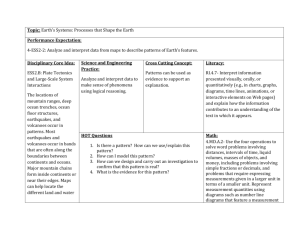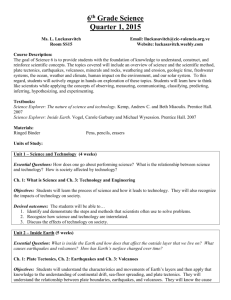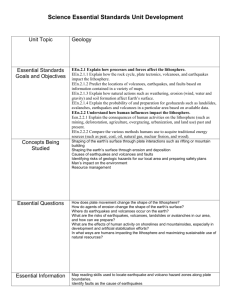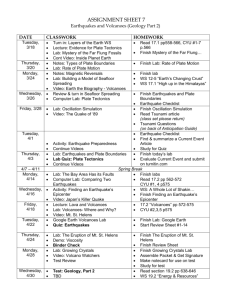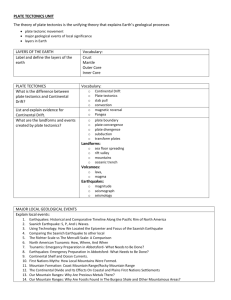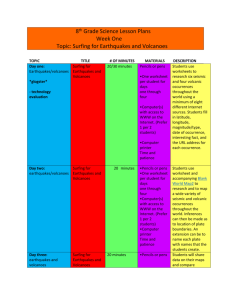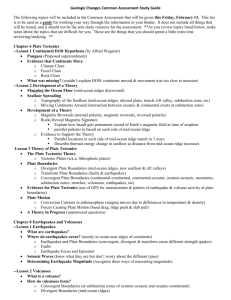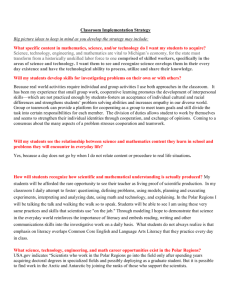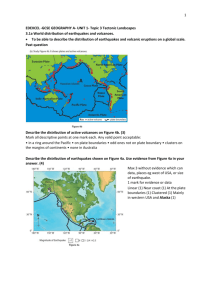GRADE 9 GEOGRAPHY STUDY GUIDE
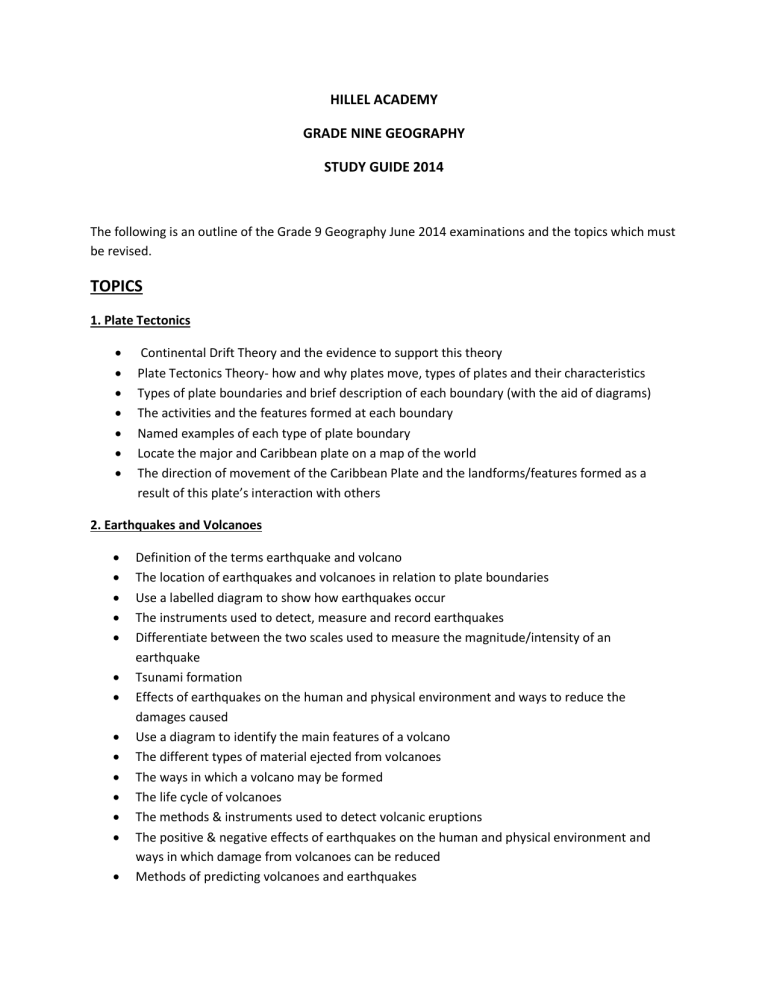
HILLEL ACADEMY
GRADE NINE GEOGRAPHY
STUDY GUIDE 2014
The following is an outline of the Grade 9 Geography June 2014 examinations and the topics which must be revised.
TOPICS
1. Plate Tectonics
Continental Drift Theory and the evidence to support this theory
Plate Tectonics Theory- how and why plates move, types of plates and their characteristics
Types of plate boundaries and brief description of each boundary (with the aid of diagrams)
The activities and the features formed at each boundary
Named examples of each type of plate boundary
Locate the major and Caribbean plate on a map of the world
The direction of movement of the Caribbean Plate and the landforms/features formed as a result of this plate’s interaction with others
2. Earthquakes and Volcanoes
Definition of the terms earthquake and volcano
The location of earthquakes and volcanoes in relation to plate boundaries
Use a labelled diagram to show how earthquakes occur
The instruments used to detect, measure and record earthquakes
Differentiate between the two scales used to measure the magnitude/intensity of an earthquake
Tsunami formation
Effects of earthquakes on the human and physical environment and ways to reduce the damages caused
Use a diagram to identify the main features of a volcano
The different types of material ejected from volcanoes
The ways in which a volcano may be formed
The life cycle of volcanoes
The methods & instruments used to detect volcanic eruptions
The positive & negative effects of earthquakes on the human and physical environment and
ways in which damage from volcanoes can be reduced
Methods of predicting volcanoes and earthquakes
Explain why countries respond differently to earthquake and volcanic events
3. World Development
Define the term development
Classification of levels of development
United Nations Millennium Development Goals.
Types of development Measures- GDP,GNI, HDI
The Human Development Index- including who developed it and why it was developed & its components
Types of Aid
Advantages and Disadvantages of Aid
Features of Sustainable Development.
4. Geographical Enquiry
Constructing the research question.
Types of research sources
Finding reputable research sources
Methods of Data Collection.
Graphical methods of data representation
Elements of Analysis.
Constructing a Bibliography
5. Map Skills
Essential map features
Using the map key (conventional symbols and colours
Locate places using four and six figure grid references.
Give the direction (sixteen point compass) of places on maps.
Use the ration and linear scale on maps
Measure distances on a map along a straight and curved path
Draw inferences from map information.
Interpreting contour lines.
Drawing cross-sections from contour lines
Identify topographic features from cross-sections
Relationship between topographic and manmade features on a map
EXAMINATION FORMAT
This examination will have three sections. All sections must be attempted.
SECTION A –will consist of multiple choice questions, fill-in-the blanks and true/false questions covering the entire syllabus.
SECTION B- Short answer questions will be given. This section will also be focusing on application map skills and geographical enquiry skills.
SECTION C- The focus of this section will be application of knowledge and thinking skills from topics 1-3.
Students will be given three questions of which they are to answer any two questions.
RESOURCES
Students should consult the following in preparation for the exams:
1.
Notebooks, Handouts and Worksheets
2.
New Key Geography Interactions text:
Plate Tectonics – pages: 30-31
Volcanoes & Earthquakes – pages: 29, 32-33, 28-35, 36-39, 40-43
Development – pages: 134, 128-129, 130-133, 136-138, chapter on sustainable development
3.
Basic Mapwork Skills text – pages: 7-9
4.
Internet Website – Map Zone

